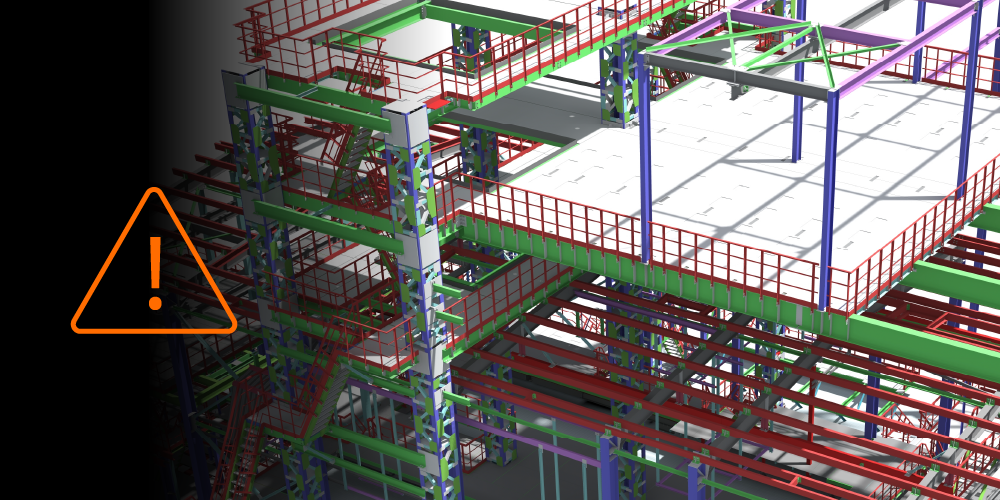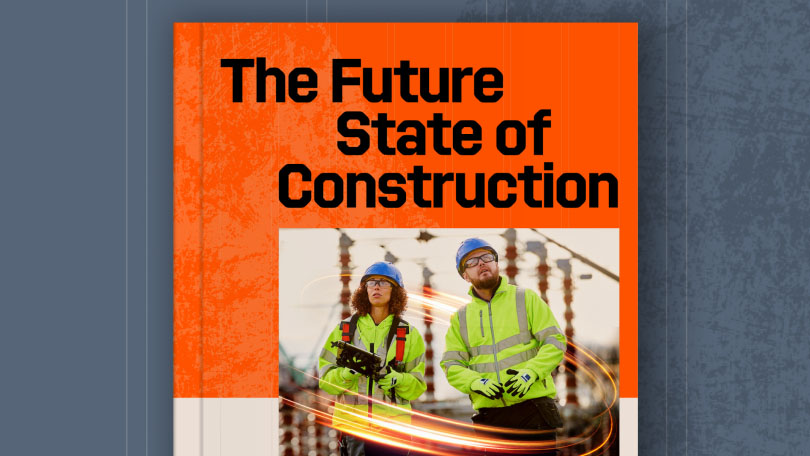Related Articles
— 8 min read
Construction ERP Explained: Why Builders Need a Unified System

Last Updated Dec 3, 2025

Josh Krissansen
48 articles
Josh Krissansen is a freelance writer with two years of experience contributing to Procore's educational library. He specialises in transforming complex construction concepts into clear, actionable insights for professionals in the industry.
Samantha Nemeny
31 articles
Sam—Samantha if she’s feeling particularly academic—has spent a decade in content marketing, with eight years focused on Australia’s construction industry. She has a knack for making complex ideas easy to understand, turning industry jargon into clear, engaging stories. With a background in SEO and marketing, she’s spent the past three years at Procore, helping industry professionals navigate the world of construction with content that’s both insightful and easy to digest.
Last Updated Dec 3, 2025

As Australian construction projects grow in value and complexity, the pressure on operational teams is intensifying. Site supervisors, safety managers, and project engineers are expected to deliver precision execution—on tighter timelines, with stricter compliance obligations, and under growing public scrutiny.
But the reality on the ground is often shaped by what happens off it. Siloed tools, manual processes, and information lag make it harder to manage risks in real time, let alone scale safe, consistent delivery across multiple jobs.
Construction ERP systems offer a way forward. Through unifying finance, procurement, payroll, and compliance into a single operational platform, ERPs give frontline leaders the visibility, control, and coordination they need to keep projects moving and teams protected.
This article breaks down how Construction ERP systems work, and how they help Australian contractors strengthen risk oversight, reduce admin burden, and support safer, more reliable performance on site.
Table of contents
What is a Construction ERP?
A construction enterprise resource planning (ERP) system brings together core business functions such as finance, payroll, procurement, resource planning, and reporting into one integrated platform.
Construction ERPs centralise core business operations, improving coordination between finance, procurement, and project teams. This eliminates system gaps, reduces manual rework, and gives leaders access to accurate, real-time data across the business.
Builders often use ERPs to replace manual workflows and fragmented systems that limit visibility and create administrative inefficiencies.
While ERPs offer strong back-office control, they are not designed for live collaboration or site execution. Many builders address this gap by using separate construction management systems to manage RFIs, drawings, coordination, and real-time communication on-site.
Pro Tip
Treat ERP selection as a commercial decision, not just an IT upgrade. The right platform should give project leaders real-time cost visibility and link every financial decision to operational performance. In construction, control of margins depends on control of data.
What Construction ERPs Actually Do on the Ground
Construction ERPs are often described in terms of features but their real value shows up in how they reshape daily operations. By bringing scattered workflows together into a unified system, ERPs change how information flows between teams, how risks are surfaced, and how decisions are made on-site and in the office.
Here’s how they work in practice across core operational areas:
Centralised Workflows and Data Visibility
ERPs break down silos between finance, procurement, project management, payroll, and compliance by syncing everything in one system. For operational teams, that means less chasing, fewer handovers, and real-time visibility into project health.
- Live data feeds reduce lag time between site activity and head office reporting
- Approvals and workflows are standardised, reducing version control issues and manual follow-up
- Audit trails and permission settings improve accountability across departments
Instead of waiting days for cost tracking spreadsheets, site teams can confirm budget status before progressing with procurement.
Integrated Project Controls and Lifecycle Tracking
Rather than working from isolated systems, project managers can use ERP tools to connect scheduling, resource management, and cost performance in one place.
- Track progress and identify schedule risks early
- View budgets alongside actuals and forecasts in real time
- Align work packages, labour hours, and subcontractor scopes under a single budget structure
A project engineer reviewing daily progress can immediately see how overruns are impacting forecast margins and adjust scope or sequencing before escalation.
Construction-Specific Financial Management
General accounting platforms often fail to meet construction’s needs. ERPs centralise core financial management processes including budgeting, forecasting, payroll, invoicing, and payments.
Construction ERPs also:
- Link financials to project progress for earned value visibility
- Align with Australian GST, payroll tax, and Modern Award interpretation
- Reduce reliance on spreadsheets through built-in reconciliation and reporting
On high-value jobs, even minor payroll or claim delays can hold up progress claims and cash flow. ERP automation reduces these downstream impacts.
Supply Chain and Procurement Control
Material delays remain a top cause of site disruption. ERPs bring procurement into tighter alignment with live project data.
- Real-time inventory visibility helps avoid material shortages and improves availability planning.
- Automated supplier communication and approval chains help reduce admin burden.
- Clear links between procurement and job cost codes support accurate forecasting.
If a supplier misses a delivery window, site teams can flag the delay, adjust sequencing, and see how it impacts overall committed cost—all without switching systems.
Subcontractor and Contract Management
Managing dozens of subcontractors across multiple jobs creates administrative complexity and risk. ERPs help standardise control across contracts, claims, and compliance.
- Store and manage all subcontractor documentation in one place
- Apply custom approval workflows to prevent unauthorised spend or scope creep
- Track performance indicators such as responsiveness, variation volumes, and safety incidents
Onboarding delays, missed documentation, or compliance issues no longer require offline tracking. Everything’s surfaced in the same system where cost and scope are managed.
Compliance and Risk Management
WHS compliance and risk controls are most effective when they’re integrated—not bolted on. Construction ERPs embed these requirements into the day-to-day flow of project delivery.
- Track inspections, safety observations, and incident reports in real time
- Set automated reminders for licence renewals, plant checks, and SWMS reviews
- Use audit trails to demonstrate compliance with WHS obligations and client requirements
Alerts and reports help teams identify emerging project risks early, while audit trails and historical data support legal compliance and reviews.
Advanced Reporting and Analytics
With project, financial, and operational data centralised, ERPs enable high-quality reporting across every layer of the business.
- Build dashboards that surface earned value, schedule health, or risk status across jobs
- Monitor live performance across regions or clients from a single interface
- Identify trends, outliers, or deteriorating performance early through predictive analytics
A safety manager reviewing incident data across four projects can spot patterns and proactively deploy additional supervision without needing four separate reports.
Mobile Access for Site-Based Teams
Modern ERPs support mobile apps that bring project data and workflows to the field. On-site leaders can interact with real-time information and update records without heading back to the office.
- Submit timesheets, view drawings, inspection, reports, and RFIs from mobile devices
- Log safety checks, defect items, or site delays immediately while context is fresh
- Sync updates with the office to keep central records current and accurate
During a site walk, a supervisor notices formwork scheduled for that day can’t proceed due to late concrete delivery. They update the schedule, notify the subcontractor, and flag the delay for commercial tracking, all from their phone.
Why ERP Is Now Essential for Large-Scale Construction
As construction projects grow in scale and complexity, disconnected systems undermine control, delay delivery, and eat away at margins.
For large commercial contractors, ERPs are the digital infrastructure that supports scalable delivery, commercial control, and high-quality decision-making across complex portfolios.
Unifies Core Business Functions into a Single System
Construction businesses operate across a wide set of interdependent teams, including finance, payroll, procurement, project controls, and operations. When these functions operate in isolation and rely on manual handovers, information becomes delayed, inconsistent, and harder to trust.
ERP platforms replace this patchwork with a unified environment. Teams operate from a single source of
truth, with updates flowing across modules as changes are made.
This eliminates double handling, streamlines internal workflows, and significantly reduces administrative overhead. Removing delays caused by version control, data transfers, and system gaps, allows large contractors to operate with greater consistency and speed.Improves Financial Discipline and Cost Control
As project values increase, margin protection becomes more difficult.
ERP systems give executives clear visibility into budgets, claims, invoices, payroll, and cash flow. Actuals are tracked against forecasts in real time, helping commercial managers identify deviations early and respond before they escalate.
Tight integration between finance and project delivery also supports stronger earned value tracking, clearer cost-to-complete insights, and better oversight of subcontractor performance.
These capabilities allow leadership teams to maintain financial control across high-value, multi-phase projects while meeting compliance obligations under Australian tax and payroll frameworks.Strengthens Procurement and Supply Chain Resilience
Delays in procurement and material delivery remain a major cause of project disruption. ERP systems improve procurement performance by automating key workflows and surfacing live inventory data across jobs.
Project teams can align supply plans with actual demand, reduce manual chasing, and minimise downtime due to material shortages or missed approvals.
Integrating procurement with cost control also gives commercial leaders a clearer view of committed spend and forecast exposure. This enables more accurate reporting, stronger risk management, and a firmer grip on delivery timelines.Enables Data-Driven Decision-Making at Scale
ERP systems consolidate business and project data into structured dashboards and automated reports, giving senior leaders real-time insight into risks, trends, and outcomes.
With access to current, trustworthy data, executives can evaluate project health, identify underperforming teams, and allocate resources more strategically. This creates a more responsive and accountable leadership environment, where business decisions are grounded in real operational context.Supports Scalable, Multi-Project Delivery
Commercial builders are rarely managing one job at a time. ERP platforms enable consistent processes across regions, clients, and delivery teams by standardising project structures, automating reporting, and improving coordination between site and office.
On-site teams can access live tools and data from mobile devices, while office teams operate with current information on progress, cost, and risk. This improves delivery predictability, reduces rework, and creates the operational clarity required to scale with confidence.
Construction ERP gives commercial contractors the visibility, control, and speed to scale successfully.
Construction ERPs reshape how operational teams coordinate work, manage compliance, and monitor cost across complex project environments. They create a single system of record that supports safer execution, faster decisions, and stronger delivery outcomes.
Categories:
Written by

Josh Krissansen
48 articles
Josh Krissansen is a freelance writer with two years of experience contributing to Procore's educational library. He specialises in transforming complex construction concepts into clear, actionable insights for professionals in the industry.
View profileSamantha Nemeny
31 articles
Sam—Samantha if she’s feeling particularly academic—has spent a decade in content marketing, with eight years focused on Australia’s construction industry. She has a knack for making complex ideas easy to understand, turning industry jargon into clear, engaging stories. With a background in SEO and marketing, she’s spent the past three years at Procore, helping industry professionals navigate the world of construction with content that’s both insightful and easy to digest.
View profileExplore more helpful resources

Managing Direct Costs in Construction: How Visibility Drives Profitability
Direct costs define the financial reality of every construction project. They cover the labour, materials, and equipment that drive delivery and determine profitability. But even the best-planned budgets can shift...

BIM Clash Detection: Reducing Rework, Delays, and Risk in Construction
Design clashes can be a significant hidden cost in construction, as each conflict between systems risks expensive rework, project delays, and reduced margins. BIM clash detection empowers teams to identify...

Next-Gen Job-Costing: Ready to Move? 5 Things to Consider Before You Get Started
In this three-part series, Quantity Surveyor turned Financial Solutions Specialist Clint Burgess uncovers the real-world gains for people, processes, and profits when businesses move from legacy to next-generation Enterprise Resource...

From Workarounds to Workflow: Solving Construction’s Legacy Job-Costing System Challenges with Next-Gen Tools
In this three-part series, Quantity Surveyor turned Financial Solutions Specialist Clint Burgess uncovers the real-world gains for people, processes, and profits when businesses move from legacy to next-generation Enterprise Resource...
